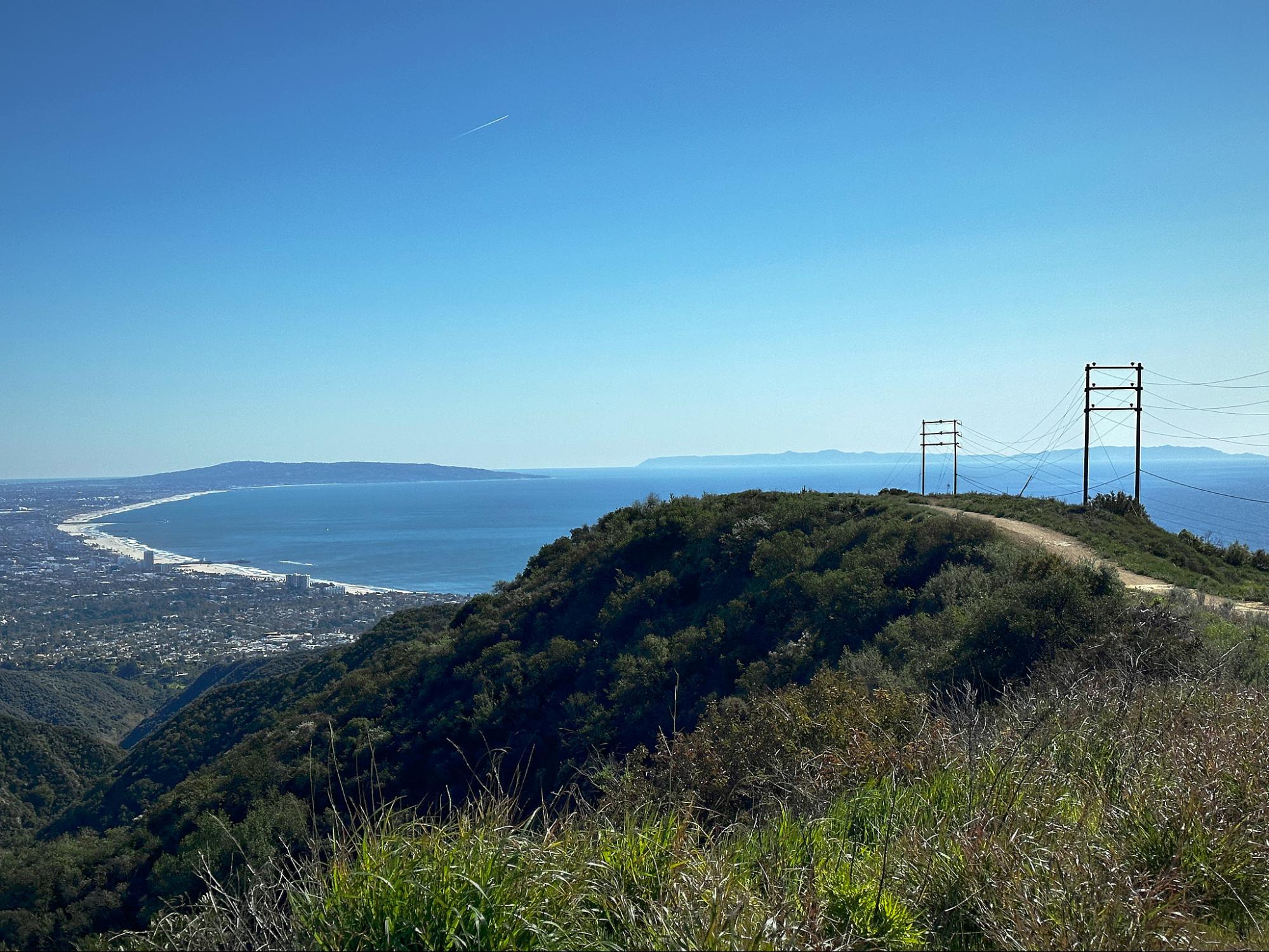Introduction
Following a winter season spent exhausting what hiking was on offer, I had taken up the wildly masochistic yet universally accepted pastime known as trail running. By this I do not mean casual jogging or the odd sprint from the angered black bear, but a methodically scheduled practice of daily miles in which prescribed distances and heart rates were adhered to with the inflexible zeal of most religions. Certainly there is a parallel between religion and daily running in that the service must be regular. There are also, of course, clear differences—rarely must one lubricate their nipples before attending church on Sunday.
The Experience of Overtraining
After three months of daily practice, I had attained what I considered a respectable weekly mileage. I’d rise each Saturday at some ungodly hour to tackle a half-marathon in the nearby mountains and then return home dusty and battered, gulping for breath, in some state of cardiac distress or other, just in time to join my family for brunch and promptly pass out in my omelet. Weekdays I’d run another three or so mornings to total a marathon per week. I mention the specific mileage not to brag—as compared to even the off-season training schedules of most mountain athletes, a 26-mile week is far from impressive. It is roughly equivalent to playing air guitar to a Jimi Hendrix solo; an endearing act of admiration, but far from the real thing. Ultrarunner Anton Krupicka famously tackled upwards of 200 miles a week while training for his races. Novelist Haruki Murakami casually mentions in his memoirs that he ran 50 miles weekly. (This is a novelist, mind you, a vocation which calls for all of the athleticism of a concrete speed bump.) Even my good friend, whose life now tucks neatly into the confines of the prosaic suburbanite—replete with two kids, a dog, modest real estate holdings, and a predictably unfulfilled desire to trim down—tells me he used to log 100-mile weeks when running track in college. In light of such seemingly commonplace achievements, I had no illusions about being a gifted runner. Still, what I lacked in talent I made up for in recklessness. Sleep became a triviality unworthy of my attention. Recovery is an extravagance on par with the Roman orgy. I adhered to a rigid discipline of running, running, running, in which it was unclear whether the purpose was to train or traumatize.

As my mileage increased I found myself indulging in an abundance of accessories, purpose-built for the novice runner’s unaccountable fixations. Among them, a neat little device which I wore to sleep each night so that I could awake to a host of charts and graphs detailing with appalling accuracy precisely how overworked I had become. Not to say this slowed me down any. And why should it? My trail running had until then been uncomplicated by injury. Talk of overtraining syndrome was purely hypothetical. The uninviting prospect of months spent sidelined, tending to a mishandled body while woefully depleted, did not loom quite as large as perhaps it should have, considering I was heir to a proud lineage of heart disease and varied cancers, with not a single athletic accomplishment to speak of.
So in the face of deepening soreness, increasing lethargy, and a generalized grousing discomfort, I persisted with my training. If Haruki Murakami could occupy an office chair for however many hours it took to crank out thirteen doorstopper novels, all while running fifty miles weekly, surely I could manage my little essays while keeping up a training regimen. It was a creditable if misguided attempt at “gutting it out,” an approach that most often succeeds only in ruining one’s guts.
In short order the inevitable occurred, as it must always: the crash and burn, the unyielding fact of fatigue, the resting heart rate which imitated a flamenco dancer’s castanets. Accompanying this, a sudden incapacity for any meaningful exertion. And so an abrupt end to my training. I found myself sleeping at first nine hours a night, then ten, and finally augmenting this with a two-hour nap each afternoon. For all intents and purposes I was a man in hibernation. My training schedule had dwindled to that of an overstuffed sectional sofa. Morning runs which once felt boundless now consisted of a miserable lurch from car to trailhead, a sort of scoliotic shuffle, followed by a complete and irreversible collapse within a mile.
This left me in a dreary state of mind indeed, if not a bloody one. I needed guidance. I needed sympathy. I needed a bilateral-leg-heart-and-lung transplant.
Talking with Jeff Garmire
Into this pit of wallowing immobility stepped Jeff “Legend” Garmire, a man who, as his moniker implies, has carried off some truly legendary feats. These include not only the Pacific Crest Trail, the Continental Divide Trail, and the Pacific Northwest Trail, but all three all bundled together into one continuous and downright incomprehensible loop of 6,875 miles. Not to mention the equally commendable achievement of completing a footrace in plastic clogs and another dressed in a bathrobe while pushing a child’s stroller. Add to this the race in which he finished third while running in two left shoes (he attributed this to honest oversight) and you begin to sense the strange breed of irreverence which first drew me to Garmire. That’s not to say he should be mistaken for a novelty or farce; Garmire’s sporting achievements rank him as among our premiere endurance athletes.

I called Garmire for guidance amid my third week of lingering fatigue and was pleased to hear that he’d encountered the same on numerous occasions. As it turns out, the myth of Icarus deceives us—the danger lies not in how close we fly to the sun, but how quickly.
“Overtraining’s not a myth,” he told me. “When you’re walking that fine line, trying to balance the exact amount of recovery with the amount of training needed, there’s a mental, physical, and emotional crash that occurs.”
And he should know. I spoke to Garmire only a week before he was to run the Cocodona 250, a two-hundred and fifty mile footrace through the heart of Arizona.
“It feels like every little injury hits you at once. Everything stiffens up and that’s the end of it, you’re beat up in every way.”
Most of his overtraining injuries were on account of running, rather than hiking. It seems that trail running’s chief hazard is the speed at which damage accrues. Whereas with hiking fatigue approaches steadily, from a distance, as a silhouetted figure on the horizon, when trail running it leaps from nearby cover to ambush you completely.
Garmire regales me with stories of being unable to get out of bed following a race, of lying still for a half hour while weighing the agony of movement with the humiliation of wetting his mattress. In all, he drives home in his offhanded and amicable way the trifling nature of my suffering. (By way of illustration: during a record-setting jaunt of the 800-mile Arizona Trail, Garmire purchased superglue from a convenience store in order to mend a sizable laceration he’d sustained along the bottom of his heel.)
“I don’t do great,” says Garmire, speaking of his time injured and overtrained. “I crawl around and play a lot of online chess and eat too much. You feel like there’s a void because the outdoors has become a staple of your daily life. There’s nothing logical about it: when you’re injured you feel like you’ll never be healthy again, and when you’re healthy you think you’ll never be injured.”
It occurs to me that while we love the tale of the man possessed, or the woman who commits herself entirely to her passions, we overlook the staggering cost of such a singular life-purpose. When you live cleanly and plainly for one thing, with unfailing commitment, you are on a shaky precipice indeed.
I left Garmire to the final preparations for his upcoming race and set myself to the strange work of recovery. At his lowest, Garmire described hobbling to a local park at night to watch the stars, that this had to serve in place of his usual hiking and running. Imagining his anguish—surely many orders of magnitude deeper than mine—I returned to the trail, humbled, this time content to simply walk it. I took in the scent of pine resin, the low mantle of clover, the runners who frolicked past me in their smooth staccato cadence, and I found it wasn’t fitness I had lost so much as hope.

The following week, Garmire completed the Cocodona 250 successfully, rallying from a lackluster opening rife with nausea and overheating to finish in sixth place amid a field of 137 entrants. I reached out to him five days following the race to inquire as to his recovery. I received only four words in return.
Oh man, he wrote, it’s tough.
Related Content:
- Author: Read more by Isaac Simons
- Podcast: Podcast 14 | Training for Backpacking
- Podcast: Episode 19 | Jeff Garmire on the Long Trail FKT
- Podcast: Episode 32 | Jeff Garmire on the Colorado Trail FKT
- Places: Completing the Triple Crown in One Year – Preparation and Planning, by Jeff Garmire
- Forums: The Shaky Science of Recovery
Jeff Garmire can be found at https://freeoutside.com.




Home › Forums › The Fact of Fatigue: On Trail Running, Jeff Garmire, and the High Price of Endurance